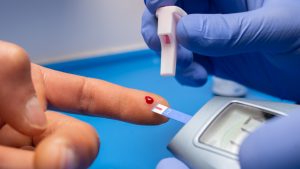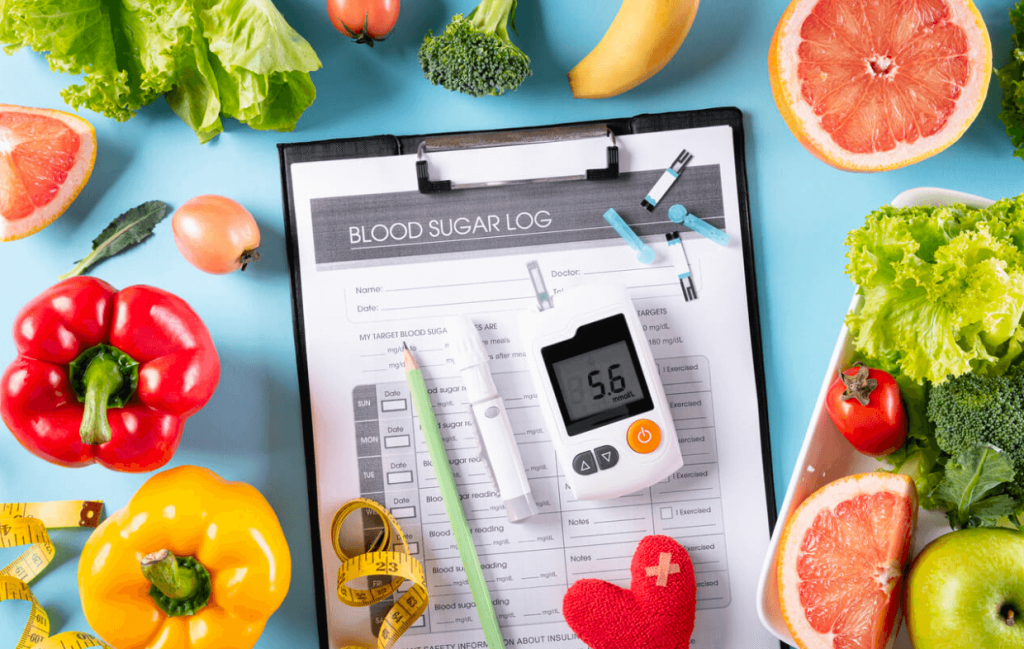What is the Glycemic Index (GI)?
The glycemic index (GI) is a system that ranks carbohydrate-containing foods according to their effect on blood sugar (glucose) levels after they are eaten. It is expressed on a scale of 0 to 100, with pure glucose being the reference with a value of 100.
How is GI calculated?
GI is calculated by measuring the glycemic response to a food containing 50 grams of available carbohydrates, compared to the response to the same amount of carbohydrate from pure glucose or white bread.
Why is GI important for diabetics?
People with diabetes, especially those with type 2 diabetes, need to control their blood glucose levels. Foods with a high GI raise blood glucose rapidly, which can lead to spikes and crashes, which can have negative long-term health consequences, such as:
- Increased risk of cardiovascular disease
- Kidney damage
- Nerve damage
- Diabetic retinopathy
Which foods have a high GI?
- Refined cereals: White bread, white rice, white pasta
- Simple sugars: Sugary drinks, candy, fruit juices
- Processed foods: French fries, cookies, pastries
- Tropical fruits: Bananas, papaya, mango
Which foods have a low GI?
- Vegetables: Broccoli, spinach, carrots, tomatoes
- Legumes: Lentils, chickpeas, beans
- Nuts: Almonds, walnuts, flaxseeds
- Fruits with skin: Apples, pears, oranges
- Whole grains: Whole-wheat bread, brown rice, whole-wheat pasta
How can diabetics use GI to manage their diabetes?
- Choose foods with a low or moderate GI: Prioritizing these foods in your diet will help control blood glucose levels and prevent complications.
- Combine foods with different GIs: Combining high- and low-GI foods in the same meal can help reduce the impact on blood glucose.
- Read food labels: Pay attention to the carbohydrate content and GI on food labels.
- Consult with a healthcare professional: A doctor or nutritionist can help create a personalized meal plan that includes the GI of foods.
Additional information for type 2 diabetics:
- Fiber: Soluble fiber found in foods like legumes, vegetables, and fruits with skin slows the absorption of sugars and helps control blood glucose.
- Physical activity: Regular physical activity improves insulin sensitivity and helps control blood glucose.
- Medication: In some cases, people with type 2 diabetes may need to take medication to control their blood glucose levels.
Recommendations:
- Maintain a healthy weight: Weight loss, even in small amounts, can improve insulin sensitivity and lower blood glucose levels.
- Manage stress: Stress can raise blood glucose levels.
- Monitor blood glucose regularly: Monitoring blood glucose levels helps identify which foods affect each person the best.
Additional resources:
- International Diabetes Federation: https://www.diabetesatlas.org/**
- American Diabetes Association: https://www.diabetes.org/**
- Diabetes Foundation: https://www.diabetes.org/**

Type 2 Diabetes: Is It Really Reversible?
A recent National Geographic article [link] explores how type 2 diabetes could be reversible with the right approaches. This condition, which affects millions of people worldwide, has long been considered a chronic and progressive disease. However, recent research challenges this perception and suggests that with lifestyle changes and the right approach, remission is possible. The

How Do GLP-1 Drugs Compare? A Breakdown of Ozempic, Mounjaro, and Trulicity
GLP-1 receptor agonists have revolutionized diabetes management, with drugs like Ozempic, Mounjaro, and Trulicity leading the market. But how do these medications compare in terms of effectiveness, side effects, and patient outcomes? Let’s explore their differences and what they mean for diabetes patients. Understanding GLP-1 Medications GLP-1 receptor agonists mimic a natural hormone that helps

Why Has Medicare Spending on Diabetes Medications Skyrocketed in 5 Years?
In the past five years, Medicare spending on diabetes medications has increased nearly fivefold, reaching $35.8 billion in 2023. This surge has been primarily driven by the growing use of GLP-1 drugs such as Ozempic, Mounjaro, and Trulicity. But what is behind this cost escalation, and how does it affect patients and the U.S. healthcare

The Gut Microbiota and Blood Sugar Control: A Hidden Connection
The human gut is home to trillions of bacteria that play a crucial role in digestion, immune function, and even metabolism. Recent research has revealed a fascinating link between the gut microbiota and blood sugar regulation, shedding light on how the balance of microbes in our intestines can influence diabetes risk and overall metabolic health.

The Dawn Phenomenon: Why Blood Sugar Rises While You Sleep
For many people with diabetes, waking up with high blood sugar levels can be frustrating—especially if they didn’t eat anything overnight. This early-morning spike in blood glucose is known as the Dawn Phenomenon, and it happens due to natural hormonal changes in the body. But why does it occur, and how can it be managed?

The Influence of Red Light on Blood: Can It Improve Diabetes?
Type 2 diabetes is a metabolic disease characterized by insulin resistance and elevated blood glucose levels. In the search for complementary alternatives to improve glycemic control, red light therapy has gained attention due to its potential to enhance circulation, reduce inflammation, and optimize cellular function. But what does science say about it? ✨ What is

